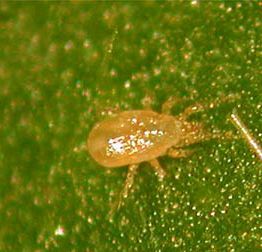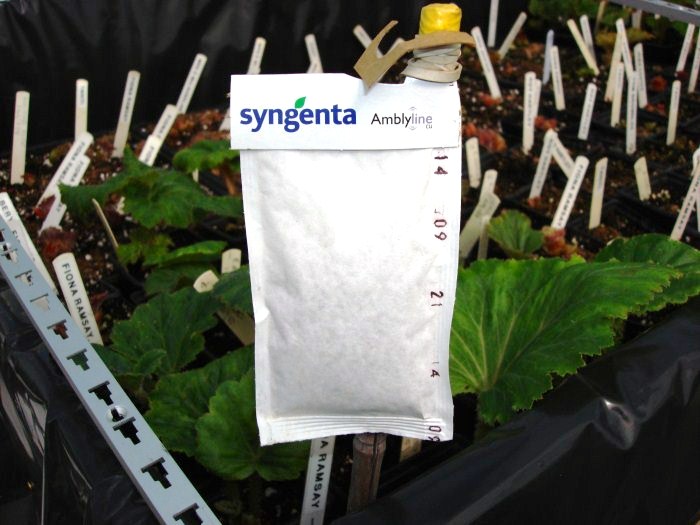Update season 2011.
Since the last article on the "Mite" there have been another four growers in the East of Scotland society have had an infestation of the Tarsonemid Mite.

This image shows the Mite and eggs
--------------------------------------------------------------------------------------------------------------------------
They are very small,shiny cream-brown mites about 0.3 mm long so you are unable to see them with the naked eye, therefore you see the damage they cause before you realise you have an infestation. Therefore before you get to this point you must plan how to deal with them.
One method now commonly used by our members are the use of a predator called "Amblyseius Cucumeris". This is what is termed a friendly Mite See the picture below

This is an image of "Amblyseius Cucumeris" Magnified.
------------------------------------------------------------------------------------------------------------------------------------------------
These are the easiest and the safest method for the amatuer grower to tackle the problem of the Mite. The predators are available in Sachets to hang up around your plants or supplied in a bran mixture inTubs, this bran is sprinkled onto the top of the pots containing your Begonias. "Amblyseius Cucumeris" are available for weekly delivery throughout the year. These come highly recommended by our members and by Begonia growers throughout the country. When you install them in your Greenhouse they scour every nook and cranny to find the larvae of the mites and devour them therebye breaking the life cycle. It will take on average three weeks for your plants to be cleared of the mites and show new clean growth. In our area of the country around the end of May or the beginning of June is the time most of the growers who use them install the Amblyseius Cucumeris as a combatant measure against a possible infestation of "Tarsonemid Mite" and those that have done so have had no trouble with the Mite.

This picture shows a sachet fixed to a cane amongst the plants, in this case it is situated in a propagator. They are usually distributed evenly throughout your greenhouses or tunnels in amongst your plants
-------------------------------------------------------------------------------------------------------------------

This picture shows a tub of Ambylesius Cucumeris
----------------------------------------------------------------------------------------------------------------------------
The favourite food of these Ambylesius mites are Thrips but in the absence of Thrips Larvae they happily attack the Tarsenomid Mite Larvae
---------------------------------------------------------------------------------------------------------------------------------------------
The second method of control is the use of Chemicals.
There have been many tried over the last ten years but there are not any totally effective chemicals that are readily available to the amatuer grower.
Pesticide advice for amateur gardeners
----------------------------------------------------------------------------------------
Our member regularly use Biological controls to help combat pests, one of the most regular companies our members use has website set up to inform growers of the options readily available to treat a particular problem.
See link below
http://www.ladybirdplantcare.co.uk